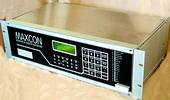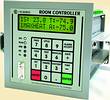
The Cato Ridge Abattoir was built in the late '70s to replace the ageing Durban and Pietermaritzburg abattoirs. The size of it in terms of processing capability was based on the figures for both sites. The facilities built for the buyers were based on the then current attendances at the auctions. The despatch area's size, and the number of loading doors, was also based on the then buyer's requirements. The result was an enormous abattoir designed to process 2500 cattle, 5000 sheep, and 1000 pigs per day.
The demise of the Meat Board
The abattoir continued to function more or less as designed for until 1994 when the Meat Board was abolished. Along with the Meat Board went their guaranteed floor price to farmers, and their related control over quotas to be slaughtered at each major-centre abattoir. The meat industry quickly realised that it was more sensible to slaughter animals at their area of origin instead of railing them as livestock for many days. The big abattoirs became white elephants overnight.
At the Cato Ridge abattoir the slaughter figures dropped to less than 20% of the design throughput, and without the economies of scale it became expensive to slaughter there. The abattoir corporation that owned it (and most of the other major centre abattoirs) eventually went under and buyers were sought for the abattoirs. Crafcor Hygrade bought the Cato Ridge Abattoir about five years ago, and through very thrifty operation has managed to keep it going, running at about 25% of capacity.
Leasing out of cold room facilities
Frey's Meats has a medium size meat factory next door to the abattoir, which had grown over the years, and was now past peak capacity. Negotiations took time, but now Frey's Meats have taken a long lease on about 30% of the cold room and despatch area. The large cold rooms are being converted into smaller cold-rooms to be used for processing and storage. The existing evaporator units are being relocated and re-used, but instead of 18 large rooms there will now be 35 smaller rooms and processing areas. Crafcor still has more than enough cold rooms and despatch area.
Other abattoirs have not survived. The abattoir at City Deep, Johannesburg stopped slaughtering in the late '90s. Kimberley's abattoir did the same, but there is now some resurrection going on. Pretoria's new abattoir at Pyramid (with an export licence) seemed like it might continue, but companies put together to buy it did not survive the change in the rand price. When the rand strengthened the export orders dried up. The bank is running it now.
The Control System
The Cato Ridge Abattoir refrigeration plant was state-of-the-art when built. The five screw compressors were controlled by industrial computers using 8085 processors, and a data-logger (also using an 8085 processor) was connected to about a thousand points. The original data-logger and controllers were made and supplied by Sterlectronics of Midrand. This original equipment was replaced in 1988.
Electronic System Wrights (ESW) of Pretoria supplied and fitted replacement units in 1988. (ESW is owned and run by Edwin van de Wiel.) Room controllers were added using a controller per electrical panel; the compressor controllers were replaced using individual controllers; and additional controllers were added to control condensers, etc, that had originally been controlled by electro-mechanical step controllers. The controllers were designed, built and programmed by ESW, using the popular 80196 series processor. The scada installed then was OnSpec, which was set up by a keen abattoir employee. A crude maximum demand control system (for electrical power) was incorporated. In 1992, ESW upgraded the inter-controller communications, added a much improved energy control system, and changed the scada to a DOS version of Factory Link.
It is estimated that the energy control system saves Crafcor about R50 000 per month in electricity. They now consume about 2,8 MWh. This control system formed the basis of the ESW Maxcon, which won an Eskom award (Figure 1). A special load shedding algorithm is used that incorporates minimum production requirements and that distributes the available energy according to priorities and deviations from the set points.

In 1994 Green Bean System Technology was started, owned and run by T.S. Selmer-Olsen (Sam). Green Bean and ESW agreed to co-operate and formed a symbiotic relationship. Green Bean developed its own scada system and started marketing control systems based on that scada and the new W-Series controller from ESW (Figure 2). The new controller had taken the previous single board controller (which required a rack, a power supply, and a separate keyboard-display unit) and made it into a complete panel-mounted controller.

Green Bean and ESW co-operated in upgrading the scada at City Deep Abattoir, and at the Pyramid Abattoir, and had several proposals to upgrade the equipment at Cato Ridge submitted and postponed. Eventually when the Factory Link PC dongle malfunctioned, and when the cost of the dongle replacement (requiring an obligatory Factory Link upgrade) was considered, an alternative, partial upgrade was agreed to - and a new energy controller and scada system (Figure 3) was installed.

Based on Green Bean's and ESW's service history and reliable equipment, Frey's Meats contracted the two companies to supply and install a new control and scada system.
Four large electrical panels control the new 35 rooms. One W-Series controller per panel is used to control up to 14 rooms of 10 different types. The W-Series controllers are supplemented by up to nine of ESW's new X-Series controller extensions (Figure 4). The X-Series extensions are LAN (ESW) enabled devices for input and output that the program on the W-Series reads and sets.

The Frey's Meats control system is now partially commissioned with around 12 of the 35 rooms running, and the rest set to come on-line when the rooms are completed. A new scada system will give Frey's Meats staff control over their equipment - and with the scada on the office network, control can be assumed from any authorised PC. The Frey's Meats scada PC will also be connected to the Crafcor scada PC and relevant control related data would be exchanged.
About Green Bean's scada
Green Bean's scada has been developed over time using Microsoft Visual Basic. The data is stored in a Microsoft Access database. It takes full advantage of the ease of networking and sharing of data under Windows. Common software modules are programmed into a customer specific database and display, and unusual additional requirements can be catered for.
For more information contact Sam Selmer-Olsen, Green Bean System Technology, 031 767 0899, [email protected], www.greenbean.co.za

© Technews Publishing (Pty) Ltd | All Rights Reserved